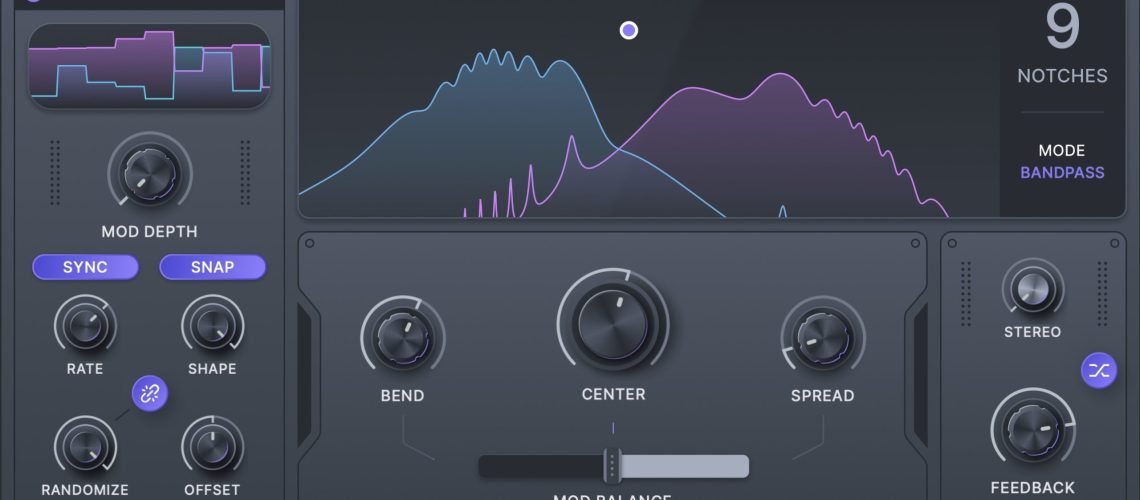Ripple Phaser, the latest Minimal Audio standalone effect, breaks free of modeling vintage hardware and lets you explore varied filtering and dispersion – all the way to the extreme.
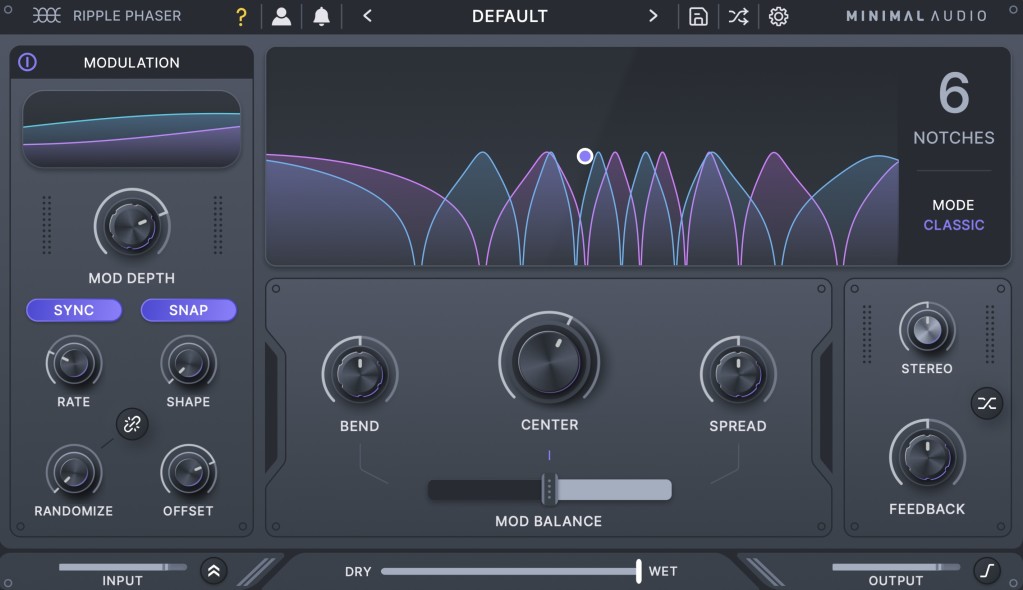
First, a quick reminder of what a phaser actually does: each stage (two or more) copies a signal out of phase with the original, producing notches in the signal via phase cancellation. Add modulation, and you get the phaser’s characteristic sweeping. Apply feedback to that signal chain, and you get sharper, resonant notches. If that sounds a lot like a flanger, that’s because it is; you can think of flangers as phasers with a delay line.
As a general model for effect, there are a lot of ways to interpret what I just said. But despite all the powers of DSP, many plug-ins emulate analog hardware—including its limitations. So when Minimal Audio says Ripple Phaser offers “unique filtering and all-pass dispersion,” the main idea here is to give you more options for how you mix signals, the possibility of using clean digital filtering options, and wider parameter ranges to let you embrace the extreme.
What’s nice about Ripple Phaser’s design is that it achieves this with clearly laid-out, economical controls; there’s a ton of depth that’s easily accessible. Check the upper right-hand part of the screen first. You can dial in just one notch up to a full 24 notches for comb filtering effects. There are also multiple modes. Let’s look at them visually (especially since for some reason, Minimal didn’t include a written manual):
There’s a ton of depth that’s easily accessible.
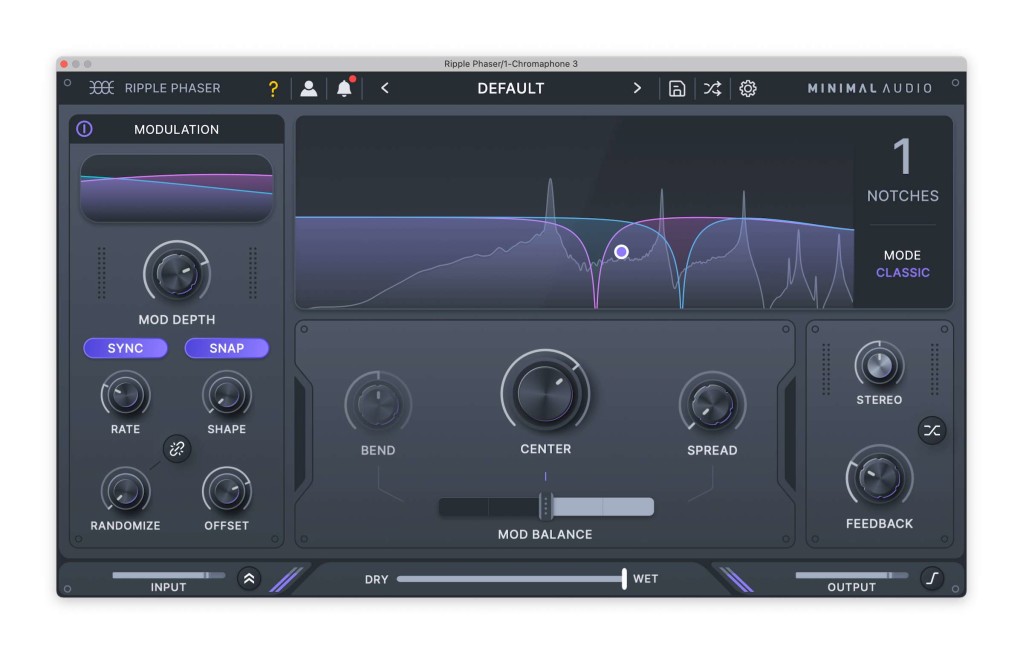
Classic is the vanilla phaser configuration: all-pass filter for each stage, phase the source signal, feedback.
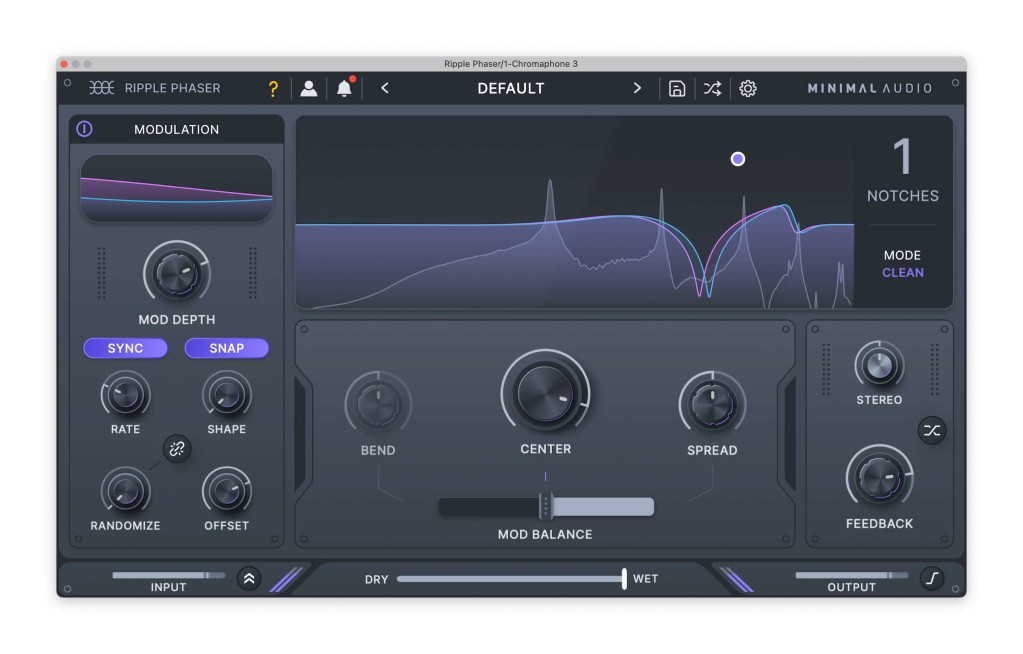
Clean seems to effectively give you the characteristics of a more precise digital filter, rather than modeling a traditional hardware effect. Note the resonant curves of the notches.
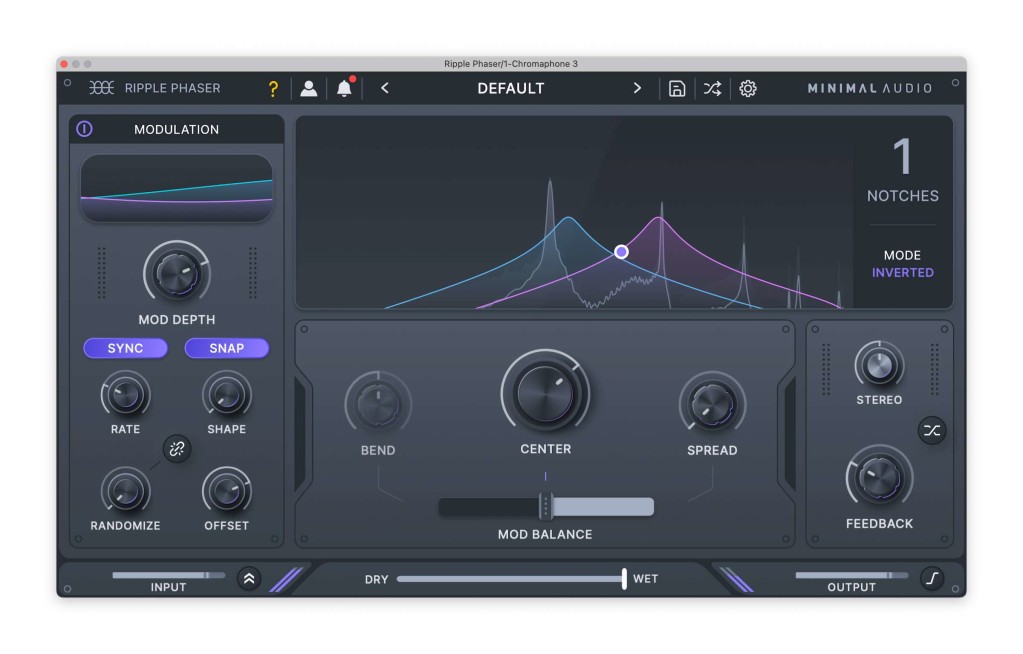
Inverted inverts the signal (and so the allpass filter). Whereas a bandpass filter (below) will give you defined notches, “inverted” will actually give you something more like the results of a sweeping bandpass filter without the notches.
And then you have the three filter options, substituting different filter shapes for the traditional phaser allpass filter (but adding notches, as on a phaser):
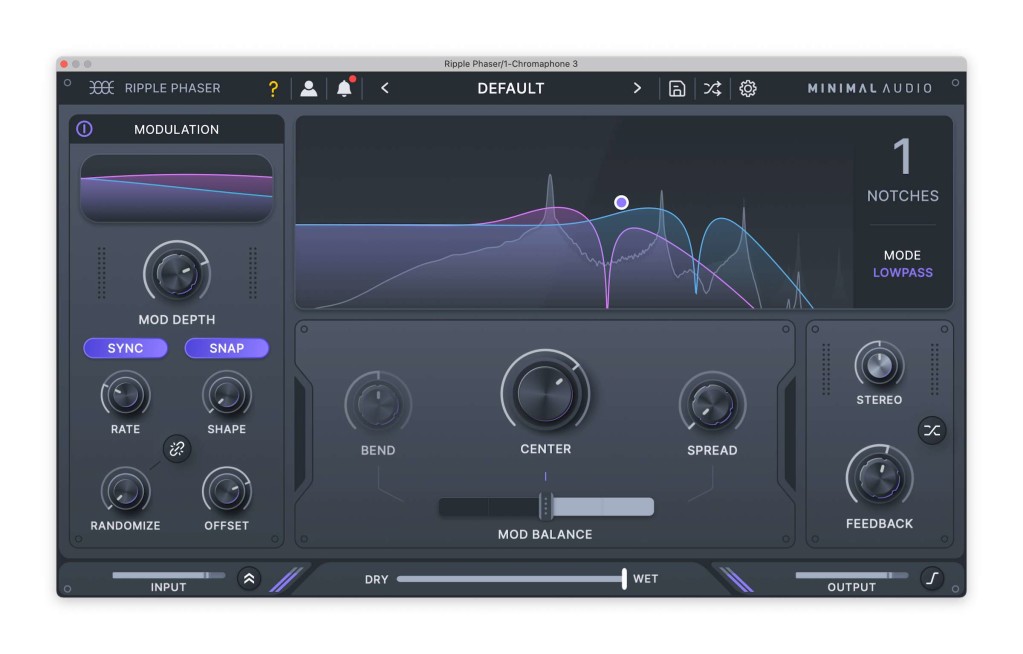
Lowpass.
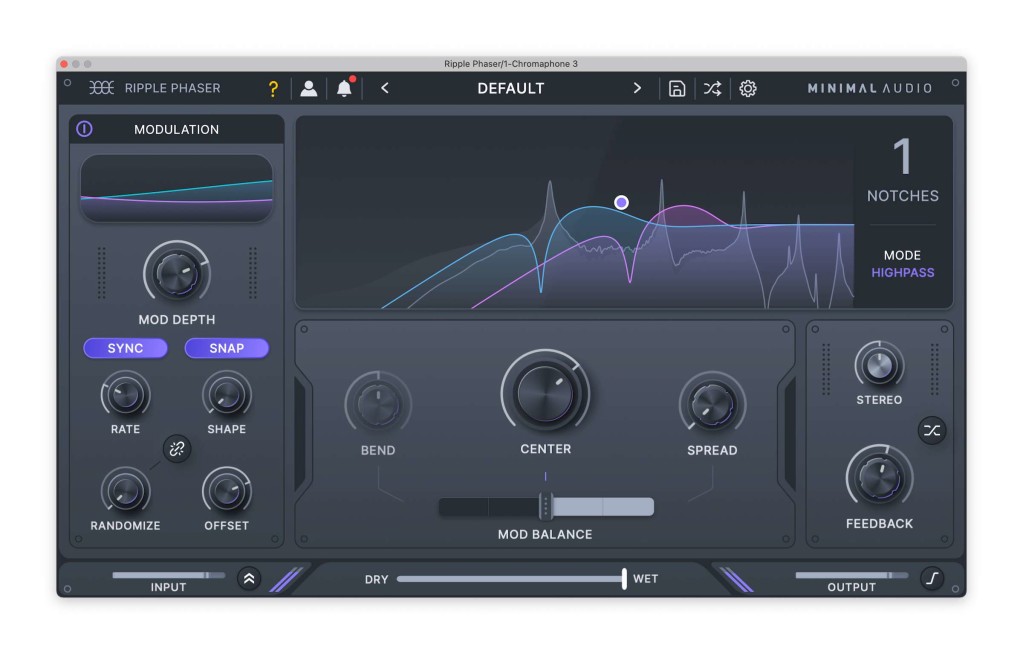
Highpass.
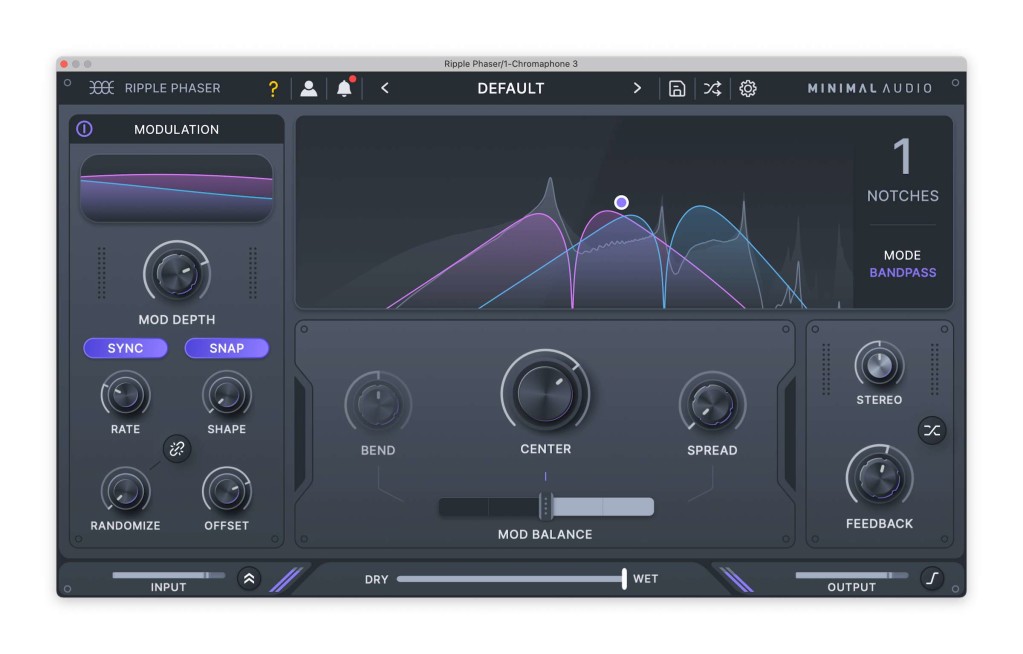
Bandpass.
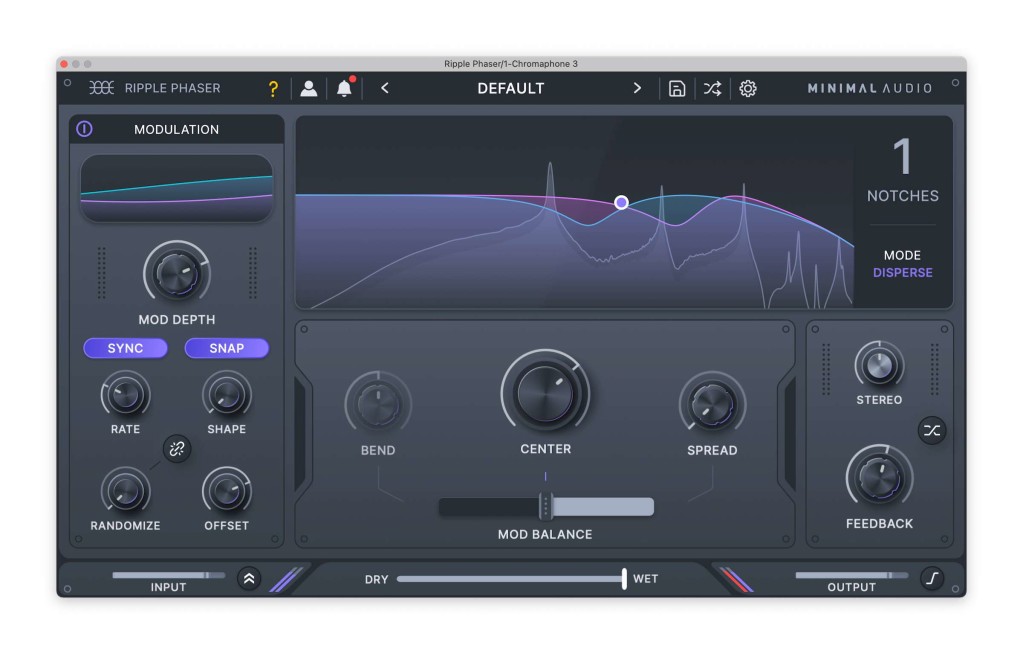
Disperse. Most interesting of all of these, there’s an all-pass dispersion option. Turn feedback all the way down, and this just gives you stereo phasing according to the modulation controls. Dial up feedback, and you get nice phasing resonant peaks (instead of notches).
Here, with just a single notch and a simple input (AAS Chromaphone 3), I walk through those settings one at a time so you can see and hear them:
Other than that, you have all the controls you might want for a huge range of effects, far beyond what you would get from a conventional phaser. That’s possible by giving you complete control over the way the notches/peaks in the phaser are spread out across your signal:
- Center sets the center frequency
- Spread increases or decreases the distance between notches
- Bend shifts notches closer or further apart (like spread), but across low or high end ranges. Set it to center to bunch notches around the center frequency and up or down to spread them out at the high or low end. (If it’s disabled, check that you have more than 1 notch selected!)
- Modulation has the usual options for rate (free/synced) and depth, but also –
- Stereo offset for determining the phase of the modulation across the stereo field
- Shape which either sets fixed waveforms (Snap enabled) or continuously morphs between them (Snap disabled)
- Randomize with amount and a stereo on/off toggle (that’s the link icon next to it)
- Mod Balance lets you determine how much the modulation is applied to bend/center/spread
As with other Minimal effects, there’s also a useful Input Send toggle (which means the input gain only impacts the effect level) and a Limiter with multiple modes. The limiter is even more important in this case than in some other minimal effects because turning up feedback will give you a bunch of resonance. That opens up additional coloration in either purple (gentle limiting) or orange (soft clipping) modes. I generally would lock this on so I don’t get too squelchy with feedback.
Put this all together, and you get a must-have phaser—even if you’ve grown fatigued of phasers. It can produce all kinds of punchy, resonant, animated dispersion and filter effects. And you get a fantastic preset library. (If they sound too extreme, just remember that you can easily dial down the results with Input Send, Mod Balance, and Dry/Wet in various combinations.
…a must-have phaser—even if you’ve grown fatigued of phasers, producing all kinds of punchy, resonant, animated dispersion and filter effects.
Here’s a quick test of some of those presets, using the Oberheim OB-1 I’ve been addicted to this month:
And this gets even more interesting in context. Arturia’s Efx Motions plus Ripple Phaser makes a fascinating combo. Efx Motions has its own multimode filters and phaser (2p-12p), with a more complex envelope/sequencer scheme – see my review. Then you add the unique modes and accessible modulation of Ripple Phaser, and you get some fascinating mayhem:
By the way, if you’re into unique twists on a phaser, none are as twisty as Sinevibes’ Whirl v2, which takes its inspiration from Bode frequency shifter models. And now it runs on Linux, but that’s another story.
Ripple Phaser is available both via Minimal’s subscription and (thank you) as a lifetime purchase. 64-bit AU, VST, VST3, and AAX, macOS and Windows, 30-day trial available:
Ripple Phaser is on sale now for a $/€29 intro price:
If you buy something from a CDM link, we may earn a commission.
Ripple Phaser | Phaser by Minimal Audio at Plugin Boutique
(plus GForce Oberheim OB-1, Arturia Efx MOTIONS mentioned)
